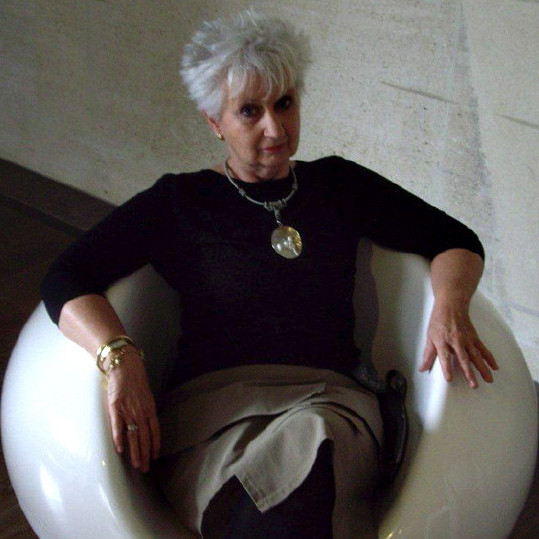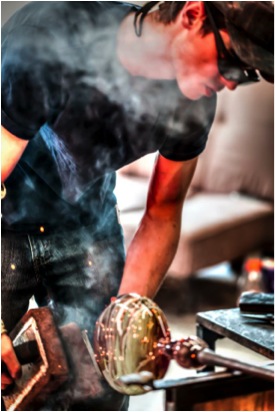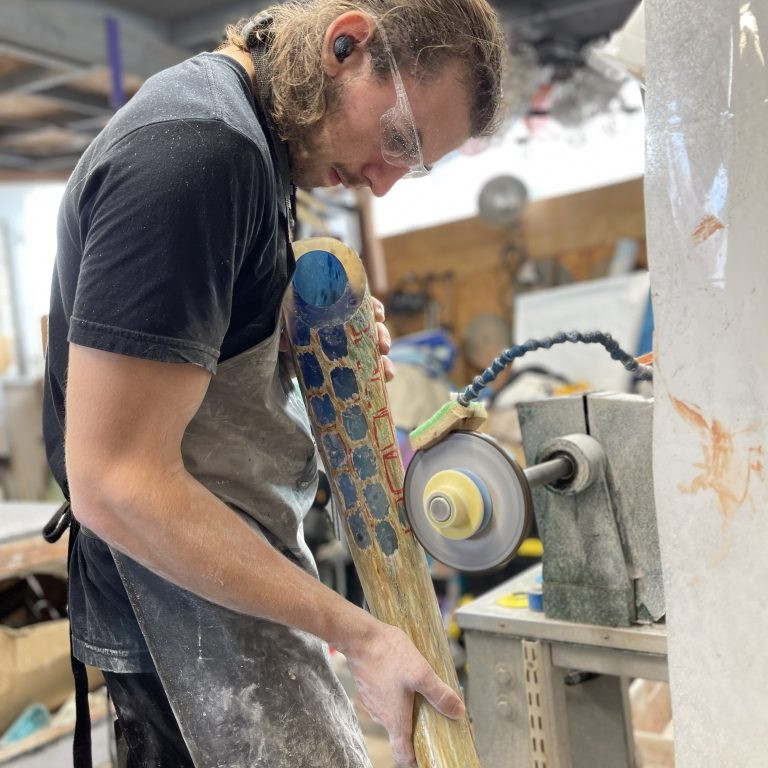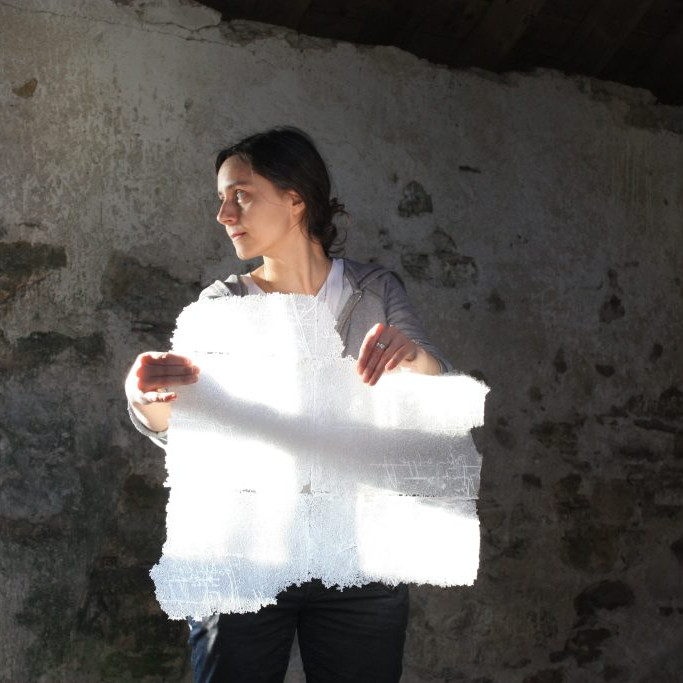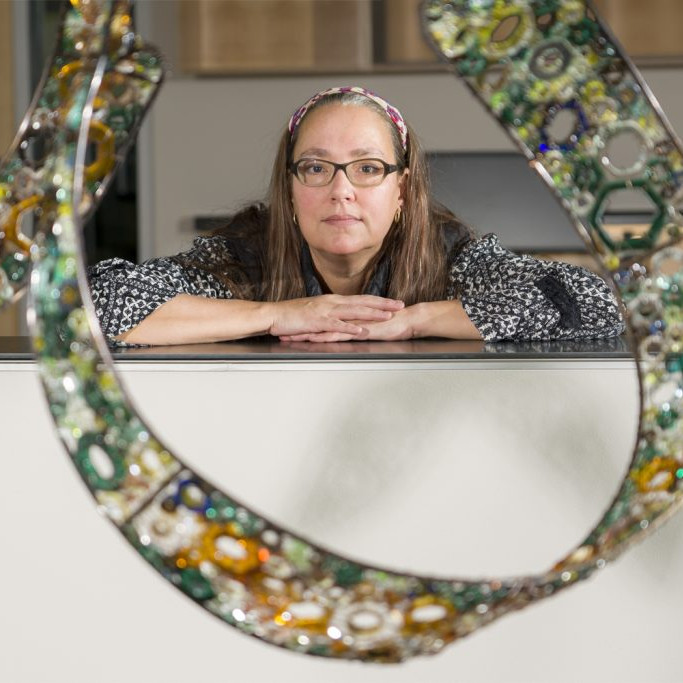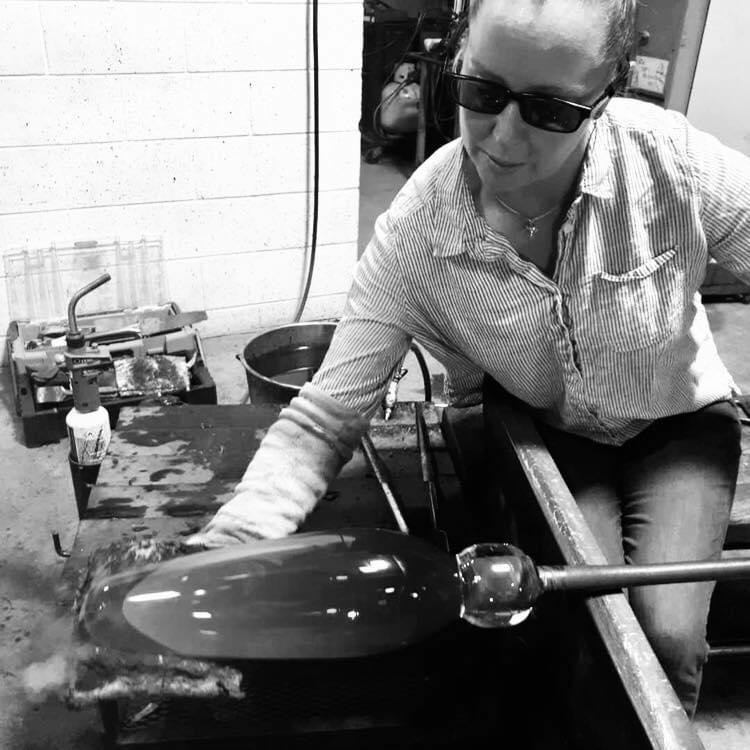David Royce Glass Artist - Little Canada Minnesota, USA
At the age of 15, what lead you to be an apprentice at a local glass shop?
I had always wanted to try glass blowing since I first saw it at the Renaissance Festival when I was about five years old. We were visiting a family friend who owned a community ceramics studio and I remembered there were glass artists upstairs in another part of the building. I walked into the studio and asked how old I had to be to be an apprentice and they told me that I needed to be eighteen. I told them I was fifteen and they told me to come back the next day, which I did. I worked with them through high school for the next two years.
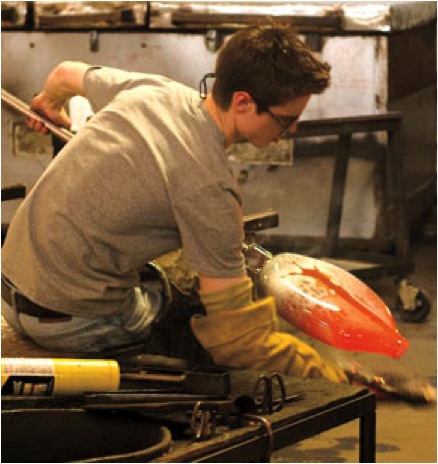
Explain about your residence in Taiwan and how it influenced the directions you then took?
Actually Taiwan was a point where I turned away from glass for a little while. I had decided I wanted to try something different and so I studied abroad in Taiwan when I was 20 and decided to change from being an art major in glass art to changing schools and studying Chinese. After the change of schools and majors it was just a couple of months before finding out about Foci Glass and starting to volunteer my time there.
What was it about the FOCI Minnesota Centre for Glass that allowed you to work full time as a glass artist?
I stepped into Foci Glass at the right time in the organization. At that point the organization was run by one artist, Michael Boyd, and had grown into a place where it was neither just his private studio, but not yet a fully public studio. I soon found myself helping manage the studio every day, firing up for renters and fixing equipment etc. In return I was given a few hours a week to work at the bench. After finishing school I started to use that time to build a body of work and get my feet underneath me in the business. I applied to a few shows and boot strapped my way into them. From there the business grew steadily. It would have been very challenging at the time to have to purchase all the blow time as well as make the necessary investments in the business.
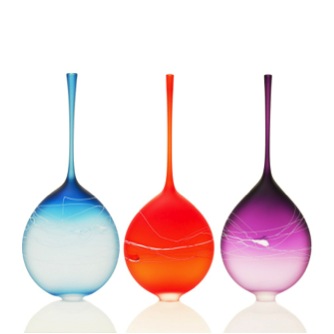
‘Art Glass Bottles’
Can you briefly explain the techniques you use in your art practice?
My work is primarily blown; some pieces are simply studies in discipline and form like the studio series for example. Other pieces are sculptural in nature and usually involve many layers. Those layers are carved, diamond point engraved and sand etched in the cold shop to reveal layers underneath. Some of the most exciting pieces to me use metal, wood and light to augment the pieces.
Can you take one of your sculptural one of a kind pieces and discuss the technique you have used?
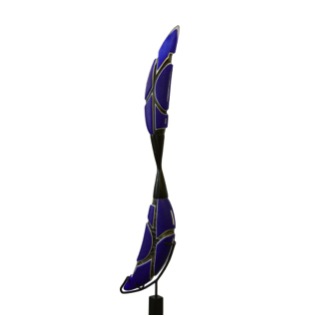
The piece above is approximately 8 feet tall and comprised of glass and steel. Each of the two pieces of glass was blown and the glass was layered carefully to create places for me to carve through. Each piece was then carved until the design was achieved. The centre section was hand carved in solid steel to match each of the top and bottom pieces. The pieces were then cold assembled and I made a cradle for the piece out of steel. The steel sits in a stand I then created also out of steel. The piece is kinetic and spins slowly.
The carvings on your work – how do you achieve this and allow it to give the feeling of a band?
The carving is all achieved by wheel cutting which is an old Italian technique of grinding away the surface of the glass with diamond grinding wheels. I personally really enjoy working cold on glass, originally I didn’t think I would, but there’s so much you can do in the cold shop that I really find it enjoyable to grind the glass. The elemental series, by contrast, is one of the first series I did with glass which is really playing around with the chemical properties of different glass colours and achieving an interesting reaction on the surface and doesn’t really have much to do with carving.
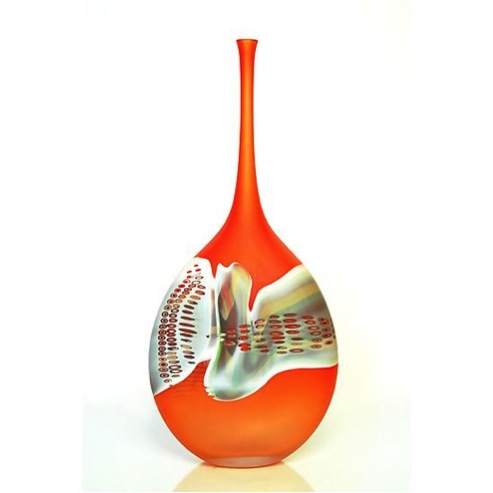
‘Orange with a Band’
In your ‘Studio Series’ pieces, the prevailing impact is colour. Can you elaborate on this?
The studio series is really about discipline for me. Achieving perfect form is paramount. I wanted to create a series that was modular in nature with each piece relating to the one next to it, but each one being a unique piece in its own right. The idea is to create small vignettes with colour and
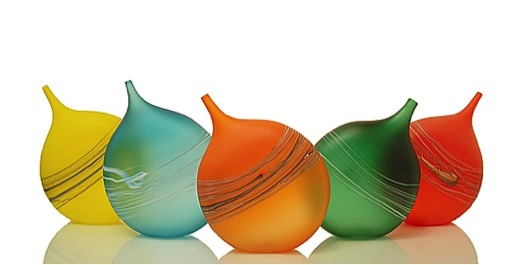
‘Tipped Bottles’
The photographic images you have give great justice to your work. Discuss the importance of lighting, background and excellent photography?
I should say that I do all of my own photography and that it is really important. I don’t have any formal training in photography, but I’ve had to do so much of this in this business that I’ve learned a few things about it. All of my pictures are taken on a white backdrop which helps also create a uniform look on the website. Also the images all look uniform on slides for shows which is helpful.
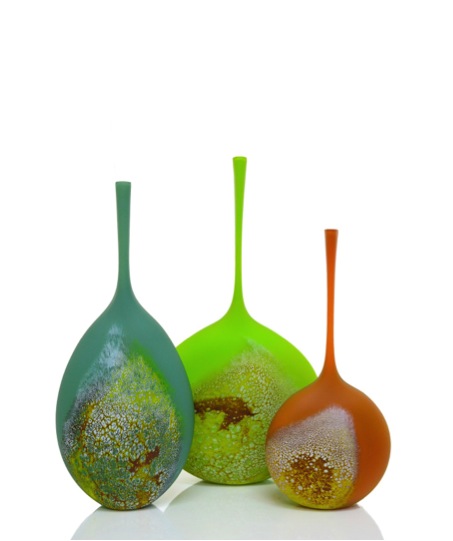
‘Elemental Pieces’
Shape is so important to glass art – can you expand on the clear clean modern shapes you achieve?
Ever since learning to blow glass when I was fifteen I was in pursuit of perfect form. I think that Plato’s idea of archetypes is relevant here; each piece has, in my mind, a perfect form that I’m trying to achieve and the idea is to discipline your hands so that they can create what’s in your mind. When I first started blowing glass I was just trying to, for example, keep a vase basically a vase and not have it turn into a bowl or vice versa. Now I focus on smaller and smaller minutiae within each form to keep trying to achieve perfect form. I really do constantly break down the process, re- examine it and find a small improvement here or there almost daily.
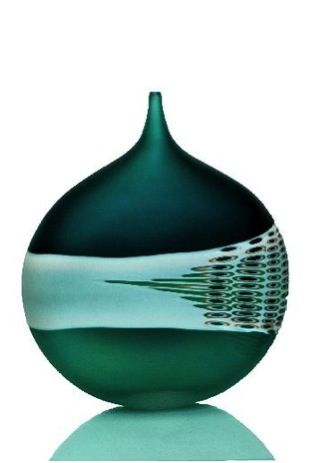
‘Green with a Band’
Can you explain your work ‘Shadow Boxes’?
This is a new series I’m working with. It occurred to me recently that most of the work I did simply was placed on a surface and didn’t necessarily have an environment it belonged to. I wanted to create pieces that felt as if they had a home. I was inspired by the way that a rare butterfly collection might be displayed in cases. Also one of the reasons to work with glass is that it can transmit light. Each case is lit by LEDs to create an interaction between the piece and light. The subject matter for the series is still abstract, but the objects to me feel futuristic in nature and that they are perhaps specimens from a far off civilization.
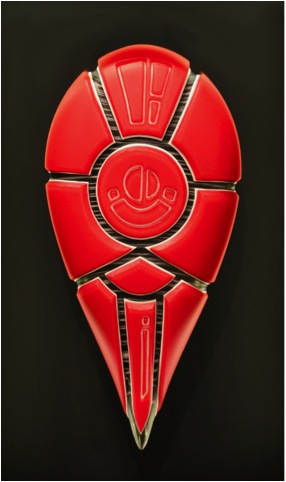
‘Red Relic’
How long do you work with a series?
I suppose one of the best things about being an artist is that you can reinvent yourself when you want to. I typically work with a series for a couple of years or until the series feels like it’s been exhausted. I believe your audience can tell when you, the artist, feel the series has been exhausted.
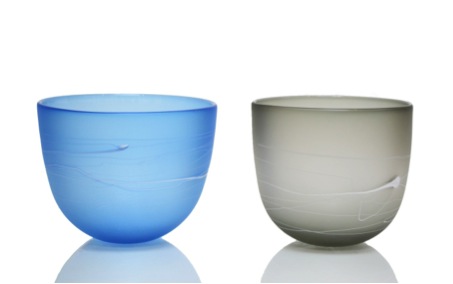
Can you comment on your need to have an interested community and other artists nearby?
You need both an interested community as well as connections to other artists to continue down this path. Certainly you need an interested community so that you can continue to financially do the work and other artists because you need to bounce ideas off them about shows, or building equipment etc. But the other key ingredient for me is having a studio set away from other artists and the community so that your ideas can develop without influence from others.
Your statement, “For me, glass presents a unique technical challenge because of its ability to transmit light.” – Can you comment on this?
I had a good friend once tell me he would ask himself “why make this piece in glass?” because glass is a difficult and expensive material to work in. Why not make it in clay or in draw it on paper etc. One property about glass that is really unique to glass is its ability to reflect and transmit light. As I design pieces I try to ask myself the same question to make sure I’m utilizing the material to its fullest potential.
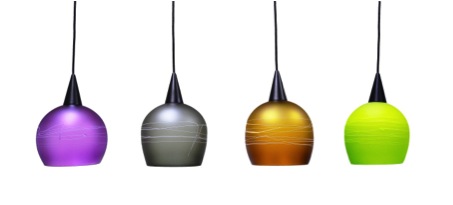
‘Lights’
Contact details.
Website:www.davidroyceglass.com
Email:Royce.dave@gmail.com
Phone:# 651.283.9494
Address:2885 Country Drive #180
Little Canada, MN 55117
David Royce, Little Canada Minnesota, USA,
Interview by Deborah Blakeley, March 2014
Think a colleague or friend could benefit from this interview?
Knowledge is one of the biggest assets in any business. So why not forward this on to your friends and colleagues so they too can start taking advantage of the insightful information the artist has given?
Other artists you may be interested in:

